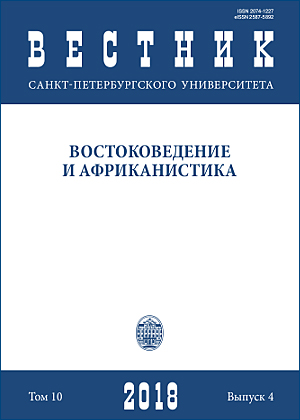Sufism and yoga: A dialogue between religious sects of Northern India in the 16th century
DOI:
https://doi.org/10.21638/spbu13.2018.407Abstract
This paper is devoted to the analysis of the mutual influence between Sufism and the local religious cults in Northern India. It has been shown that the connections between different religions in Medieval India were quite intense. The major focus is the legacy of the 14th to 16th centuries’ poets belonging to the Chishtiyya brotherhood, whose works allow to see the result of the centuries-old coexistence of different religions in India. Particular attention is paid to the role of adherents of hatha yoga, the Naths, in the formation of the brotherhood doctrine. Evidence of the exchange of ideas can be found in a multitude of diverse sources related to both the Sufi environment and the Nathian one, such as the Fawaid-al-fuad, a collection of statements by an important religious figure Nizamuddin Awliya, the poems written by members of the Chishtiyya, and the modern collection of instructions for members of the Nath community. The result of the contacts between the two communities is most comprehensively manifested in the work of Malik Muhammad Jayasi, a Sufi poet of the 16th century, who demonstrates a high level of awareness in yogic practices and the symbolic system of Nathism. In “Padmavat” and his other works one can see the use of the “twilight language” coding instructions to yoga practitioners. One can not deny the importance of analyzing interfaith relations, since some connections between the Sufi brotherhood and the Nath community remain even today.
Keywords:
Sufism, Nathis, India, Jayasi
Downloads
References
Downloads
Published
How to Cite
Issue
Section
License
Articles of "Vestnik of Saint Petersburg University. Asian and African Studies" are open access distributed under the terms of the License Agreement with Saint Petersburg State University, which permits to the authors unrestricted distribution and self-archiving free of charge.





